
| (one synonym : Ophideres apta Walker, 1858) Dot Underwing CALPINAE, EREBIDAE, NOCTUOIDEA | (donherbisonevans@yahoo.com) and Stella Crossley |
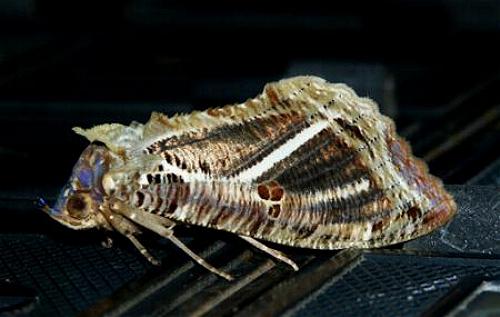
Female
(Photo: courtesy of Buck Richardson,
Kuranda, Queensland)

| (one synonym : Ophideres apta Walker, 1858) Dot Underwing CALPINAE, EREBIDAE, NOCTUOIDEA | (donherbisonevans@yahoo.com) and Stella Crossley |

Female
(Photo: courtesy of Buck Richardson,
Kuranda, Queensland)
The Caterpillars of this species feed on plants in the Moonseed family ( (MENISPERMACEAE), for example :
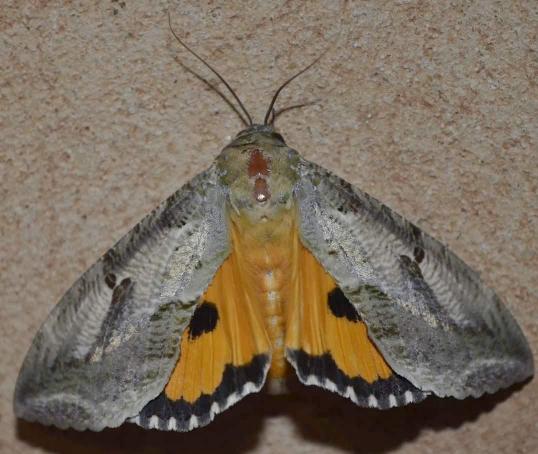
The adult moth has fawn forewings with a variable pattern of pale and dark lines and patches. The hindwings are bright yellow to orange, with a dark spot in the middle and a broad dark border with white spots along the edge.
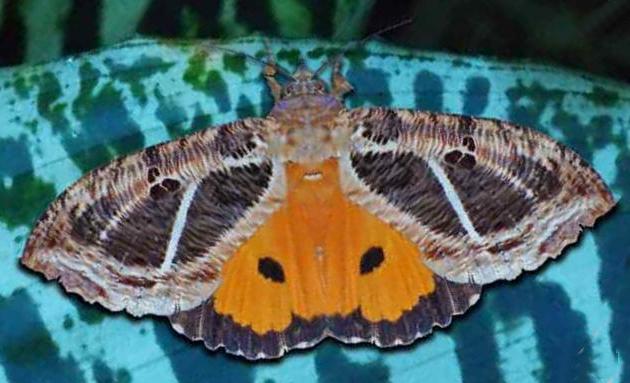
The females have an additional white diagonal stripe across each forewing. The moth has a wingspan of about 6 cms.
The species occurs all around the world, particularly :
as well as in Australia in:
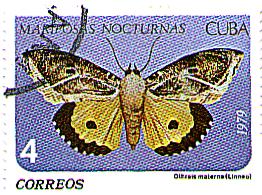 Cuba 1979 | 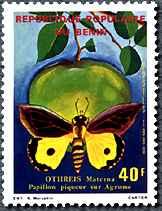 Benin 1980 |
The adult moth is an agricultural pest, attacking fruit. It has a sharp haustellum that it uses to penetrate the fruit in order to suck the juices. After the fruit has been pierced, fungi and other microorganisms can enter the fruit and cause it to rot. The moth is is known to attack many fruits, including:
Control is being attempted using :
Further reading :
Ian F.B. Common,
Moths of Australia,
Melbourne University Press, 1990, pp. 65, 449.
Carl Linnaeus,
Insecta Lepidoptera,
Systema Naturae,
Edition 12 (1767), Volume 1, Part 2, p. 840, No. 117.
Peter Marriott,
Moths of Victoria - Part 8,
Night Moths and Allies - NOCTUOIDEA(B),
Entomological Society of Victoria, 2017, pp. 18-19.
Buck Richardson,
Tropical Queensland Wildlife from Dusk to Dawn Science and Art,
LeapFrogOz, Kuranda, 2015, p. 138.
 caterpillar |  butterflies |  Lepidoptera |  moths |  caterpillar |
(updated 30 July 2013, 22 May 2017, 27 August 2020, 12 April 2021)